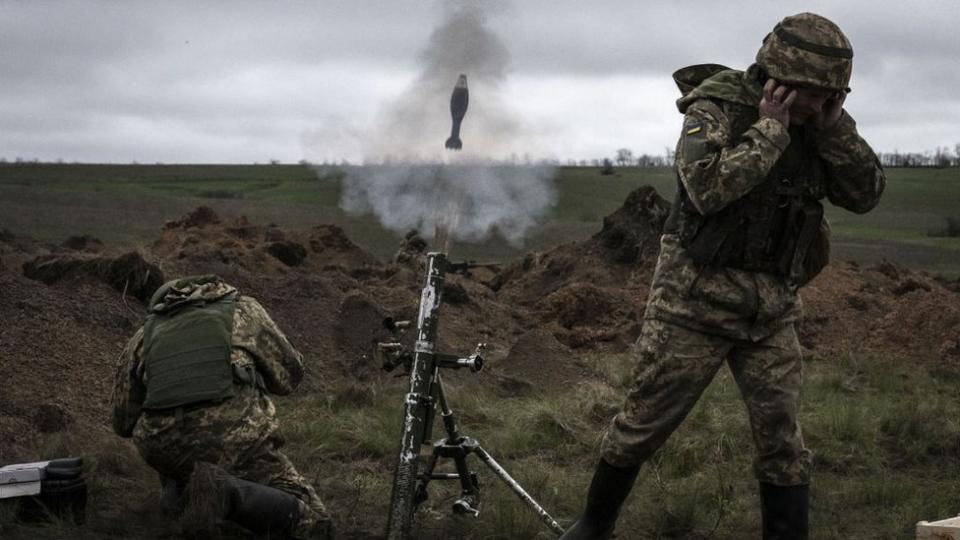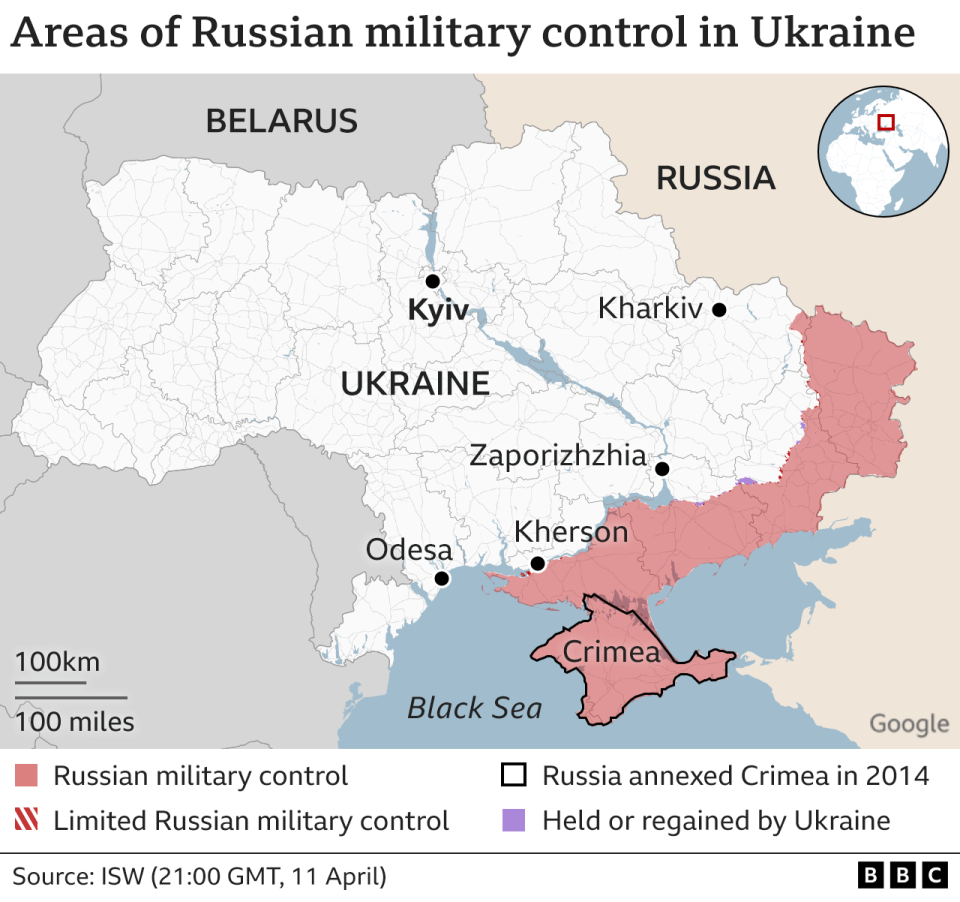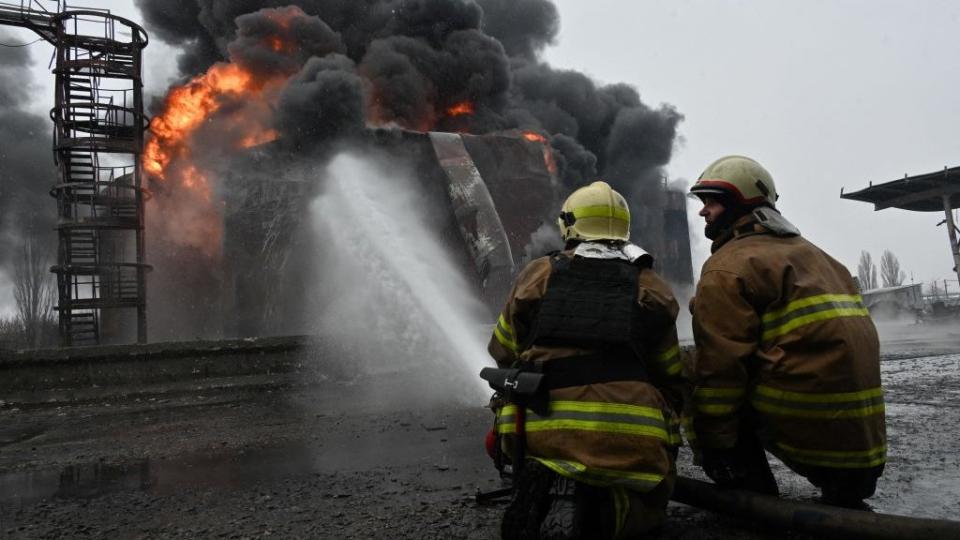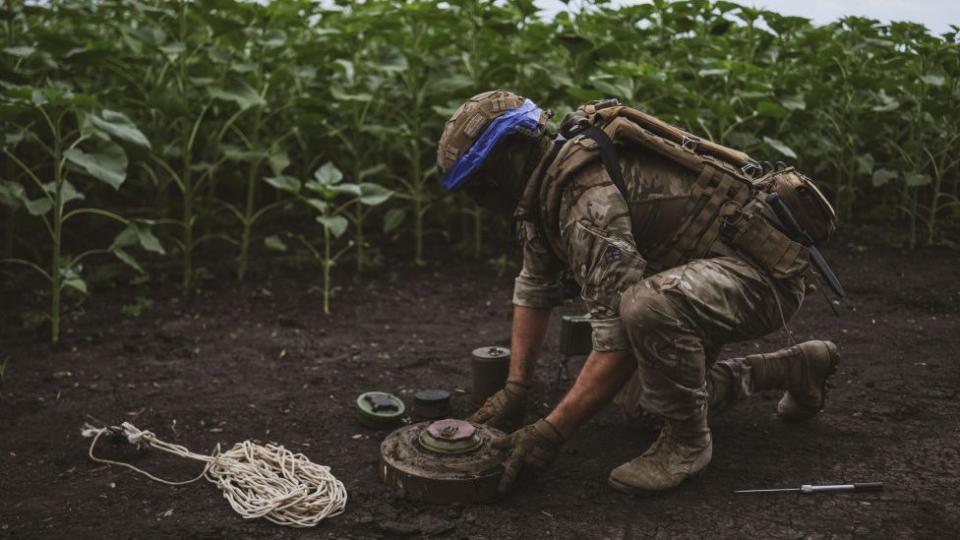The former commander of the UK Joint Forces Command has warned that Ukraine could face defeat to Russia in 2024.
General Sir Richard Barrons told the BBC there is “a serious risk” that Ukraine will lose the war this year.
The reason, he says, is “because Ukraine may feel like it can’t win.”
“And when it gets to that point, why will people continue to want to fight and die, just to defend the indefensible?”
Ukraine has not reached that point yet.
But its forces are critically short of ammunition, troops and air defenses. Their much-heralded counteroffensive last year failed to dislodge the Russians from the ground they had seized, and now Moscow is preparing for a summer offensive.
So what will this look like and what are its likely strategic goals?
“The shape of the coming Russian offensive is quite clear,” says Gen. Barrons.
“We are seeing Russia attack on the front line, employing a five-to-one advantage in artillery, ammunition and a surplus of people reinforced by the use of newer weapons.”

These include the FAB’s glide bomb, an adapted Soviet-era “mute bomb” equipped with fins, GPS guidance and 1,500 kg of high explosive, which is wreaking havoc on Ukrainian defenses.
“At some point this summer,” says Gen Barrons, “we expect to see a major Russian offensive, with the intention of doing more than advancing with small gains to perhaps try to break through the Ukrainian lines.
“And if that happens we would run the risk of Russian forces invading and exploiting areas of Ukraine where the Ukrainian military cannot stop them.”
But where?
Last year, the Russians knew exactly where Ukraine was likely to attack – from the direction of Zaporizhzhia, south towards the Sea of Azov. They planned accordingly and managed to stop Ukraine’s advance.
Now the situation is on the other side, as Russia mass its troops and keeps Kiev guessing where it will attack next.


“One of the challenges the Ukrainians face,” says Dr Jack Watling, senior land warfare researcher at Whitehall thinktank the Royal United Services Institute (Rusi), “is that the Russians can choose where to put their forces.
“It’s a very long front line and the Ukrainians need to be able to fully defend it.”
Which, of course, they can’t.
“The Ukrainian military will lose ground,” says Dr. Watling. “The question is: how much and which population centers will be affected?”
It is quite possible that the Russian General Staff has not yet decided which direction to designate as its main effort. But it is possible to broadly divide your various options into three broad locations.
Kharkiv
“Kharkiv,” says Dr. Watling, “is certainly vulnerable.”
As Ukraine’s second city, situated dangerously close to the Russian border, Kharkiv is a tempting target for Moscow.
Currently, the country is being attacked daily by Russian missile attacks, with Ukraine unable to have sufficient air defenses to fend off the lethal mix of drones, cruise and ballistic missiles aimed in its direction.


“I think this year’s offensive will have as its first objective getting out of Donbass,” adds Gen Barrons, “and its eyes will be on Kharkiv, which is 29 kilometers away. [18 miles] or something from the Russian border, an important prize.”
Can Ukraine still function as a viable entity if Kharkiv falls? Yes, analysts say, but it would be a catastrophic blow to both their morale and their economy.
The Donbas
The area of eastern Ukraine known collectively as Donbass has been at war since 2014, when Moscow-backed separatists declared themselves “people’s republics”.
In 2022, Russia illegally annexed the two oblasts, or provinces, of Donbass, Donetsk and Luhansk. This is where most of the ground fighting has taken place over the past 18 months.
Ukraine has controversially spent enormous efforts, both in manpower and resources, in trying to hold first the city of Bakhmut and then Avdiivka.
He lost both, as well as some of his best combat troops, in the attempt.
Kiev responded that its resistance inflicted a disproportionate number of casualties on the Russians.
This is true, with the battlefield in these locations being nicknamed the “meat grinder”.
But Moscow has many more troops to throw into the fight – and Ukraine does not.
Commander of US Forces in Europe, General Christopher Cavoli, warned that unless the US sends significantly more weapons and ammunition to Ukraine, its forces will be outgunned on the battlefield by a ratio of ten to one.
Mass matters. The Russian army’s tactics, leadership and equipment may be inferior to those of Ukraine, but it has such superiority in numbers, especially in artillery, that if it does nothing more this year, its default option will be to continue pushing Ukraine’s forces back. in the west direction. taking village after village.
Zaporizhzhya
This is also a tempting prize for Moscow.
The southern Ukrainian city of more than 700,000 inhabitants (in peacetime) sits dangerously close to the Russian front lines.
It is also something of a thorn in Russia’s side, given that it is the capital of an oblast of the same name that Russia illegally annexed, and yet the city still lives freely in Ukrainian hands.
But the formidable defenses that Russia built south of Zaporizhzhia last year, in the correct expectation of a Ukrainian attack, would now complicate a Russian advance from there.
The so-called Surovikin Line, made up of triple layers of defenses, is linked to the largest and densest minefield in the world. Russia could partially dismantle this, but its preparations would likely be detected.


Russia’s strategic objective this year may not even be territorial. It could simply be to crush Ukraine’s fighting spirit and convince its Western supporters that this war is a lost cause.
Dr Jack Watling believes the Russian aim is “to try to generate a sense of hopelessness”.
“That [Russian] offensive will not decisively end the conflict, regardless of how it goes for either side,” he says.
Gen. Barrons is also skeptical that, despite the dire situation Ukraine now finds itself in, Russia will automatically press its advantage with a decisive advance.
“I think the most likely outcome is that Russia has made gains but has not been able to advance.
“There will not be forces big enough or good enough to drill all the way to the river. [Dnipro]…but the war will have turned in Russia’s favor.”
One thing is certain: Russian President Vladimir Putin has no intention of giving up his attack on Ukraine.
He is like a poker player betting all his chips on winning. He is counting on the West not being able to provide Ukraine with sufficient means to defend itself.
Despite all the NATO summits, all the conferences and all the moving speeches, there is a chance he is right.



































